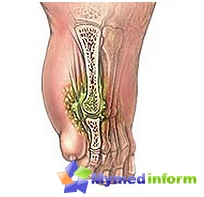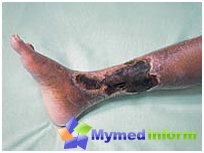Favoring intestinal obstruction in most cases develops after transferred operations on the abdominal organs, with abdominal injuries and peritonitis. The disease begins acutely, proceeds violently and quickly leads to an intestine color and peritonitis.
Content
Concept of adhesive intestinal obstruction
 The adhesive disease is one of the most frequent forms of intestinal obstruction. Spikes and cure in the abdominal cavity arise after transferred sharp diffuse or limited peritonitis, abdominal injuries and hemorrhages.
The adhesive disease is one of the most frequent forms of intestinal obstruction. Spikes and cure in the abdominal cavity arise after transferred sharp diffuse or limited peritonitis, abdominal injuries and hemorrhages.
Favorable intestinal obstruction can be at any intestinal level. Often the gland is soldered with the postoperative abutment scar or with organs injured during surgery.
The basis of adhesive intestinal obstruction is the dynamic factor (peristaltic violation), which is due to spikes.
Favoring intestinal obstruction can flow through a stagnation, common and mixed type. The latter form is a combination of mechanical and dynamic obstruction.
The main symptoms of the strange form
The steregulatsonal form of adhesive disease occurs when the intestinal section is infrained with the involvement of the mesentery.
In most cases, the disease begins acutely and with a strong infringement proceeds violently, hemodynamic disorders appear early, which lead to an intestinal death and the development of peritonitis.
Symptoms and variants of the flow of the steady form of adhesive disease depend on the deadlines and the level of obstruction, the degree of infringement of intestinal loops, the length of the disadvantaged bowel segment, the degree of filling of the digestive tract in the occurrence of obstruction, age and the overall state of the patient.
Manifestations of the obtuctive form of adhesive intestinal obstruction
The obtaceous form of adhesive intestinal obstruction begins acutely and proceeds quite violently. However, in some cases, the disease begins, patients suffer from a long time suffer from chronic interspersed obstruction. In some patients, the starting attack early or later acquires an acute course.
A combination of mechanical and dynamic adherence is more difficult, most often observed in spike intestinal loops with sharp inflammatory infiltrates of the abdominal cavity.
Related diseases exacerbate the flow of adhesive disease, increasing the danger of death after surgery. In case of adhesive intestinal obstruction, parenchymal and hematopoietic organs often suffer.
Treatment of adhesive intestinal obstruction
All patients with suspicion of adhesive intestinal obstruction must necessarily be sent to the surgical department.
Immediately after entering the hospital, a bilateral paranefral blockade is carried out in the hospital. If the pain disappears, gases depart, the chair is independent, then it speaks of partial adhesions, where functional, dynamic components prevail. Operation in this case is not shown. If the panefral novocainel blockade does not give effect, the stomach is injected, they make a siphon enema. In the event of the ineffectiveness of all these events, an operation is shown.
The nature of the operational intervention during adhesive disease is as follows:
- separation of adhesions and heavy
- Removal of affected intestines
- Bypass anastomosis (compound) between leading and discharge intestinal loops
- intestinal fistula on bloated loop
Patients with adhesion after extracting from a surgical hospital need long-term dispensary observation, physiotherapeutic treatment and treatment on mud resorts in order to prevent adhesive recurrence recurrence.









